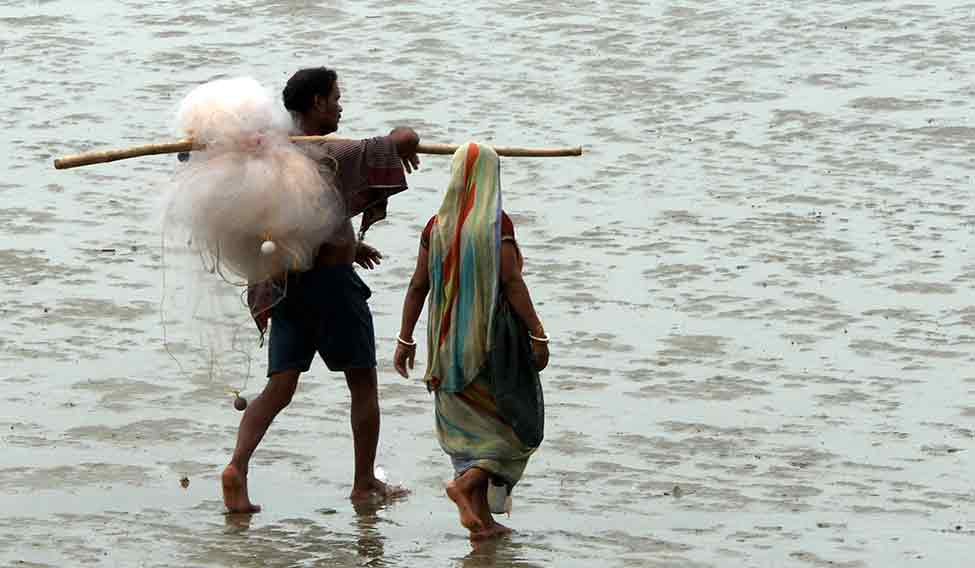Chandipur, a silent coastal village in Odisha, has one of the finest fishing harbours in the country; locals call it the Maach Rajya (fish state) of India. Around 2,000 boats are stationed at the seashore every day and an equal number at deep sea 70 to 100 kilometres away. Every day, around 50 boats leave the shore and return after 15 to 20 days. The wholesale markets on the shore auction prawns, crabs, small fishes, Bhola and Sankar fish and many others to retail fish sellers every day. Around 50,000 kilograms of fish are sold every day at the market. The boat owners rent out their boats to the fishermen for Rs 10,000 per trip. These fishermen go out to sea carrying rice, potatoes, edible oil and a stove.
But fish is not the only thing Chandipur is famous for. The Chandipur coastline is located just 70 kilometres from Abdul Kalam island, where missiles are tested. On June 30, India successfully test-fired from here a surface-to-air missile developed jointly with Israel. Known earlier as Wheeler’s Island, it was renamed last year after the missile man of India, former president A.P.J. Abdul Kalam. The Defence Research and Development Organisation (DRDO) has an office and staff quarters in Chandipur. The village has a school of engineering and a private English medium school exclusively for the children of DRDO staffers.
Can the fishermen see the missiles that are tested when they go out fishing?
“Yes we can see them from the shore,” says Modhu Ghorai, a fisherman who works at the Chandipur fishing harbour. “There is a restriction on taking a particular route near the island the day the missiles are test-fired.”
One of the schools is located on the DRDO campus as part of the organisation’s social responsibility. The children go inside the campus early in the morning with their identity cards and come back in the evening. The place needs more schools. As Baribala Giri, a small hawker, says, “This is a military zone. We only earn small amounts by selling some snacks. Otherwise we have nothing here.”
Do the people know what the area is known for?
“Yes. It’s a big military zone of India and there is an island in the deep sea where military equipment is stored,” says Mustafa Hossain, who runs a car rental agency in the area. “Every month, big ships carry a lot of equipment to Wheeler’s Island. This is for our defence. We abide by the rules. When they ask us not to move, we don’t move. When they give permission, we go out.”
The villagers are confused about how to call their village—a strategic missile testing place or a prominent fishing centre? The area has recently gained prominence as a statuette of Kalam has been placed on the beach and lit up at night. “It was Chief Minister Navin Patnaik’s idea,” says fish trader Niranjan Patnaik. “He came here last year and told us that he planned to develop Chandipur into a place worth visiting.”
The villagers, however, demand more development. “There is a lack of transport and medical facilities,” says Rekha Dass, a tea stall owner. “We need more facilities as we live in a famous place that has armed India.”
“The children get some education but during our childhood, we never knew the importance of this place,” says Patnaik. “Poor people’s children don’t know even today what the village is known for. This is sheer deprivation.”
The DRDO office is a restricted area. No one can get inside without invitation or pass. No photography is allowed. “Radars have been fitted all around,” says a security official at the gate. “Last year, someone tried to enter the office to take a photograph of the Abdul Kalam island. He was arrested.”
Chandipur has a wide sand-less beach. Late evening, during high tide, the water level increases. Many locals come to the beach to watch the sunset. When missiles are test-fired with a massive whistling sound, the villagers come out to see them, leaving all their work behind. Most of them, though, have no idea what that missile stands for.






